Note: This article is designed to serve as a high level introduction to the topic and as such uses a very basic explanation. Papers for those that wish to dive into more technical details of the topic are available elsewhere.
In a virtual environment such as VMware or Hyper-V, multiple virtual machines (VMs) operate on the same physical hardware. In order to make this function, a small piece of software, called a hypervisor operates to schedule the virtual resources with the physical hardware. As a virtual machine enters a state where CPU resources are required the VM is placed into a CPU ready state until enough physical CPUs are available to match the number of virtual CPUs.
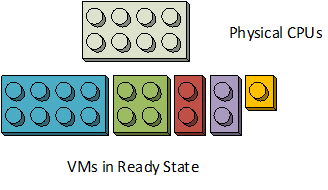
The hypervisor will schedule VMs to available physical resources until all resources that can be scheduled are used.
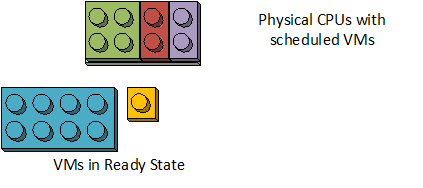
Each VM will run on the physical CPUs until either it needs to wait for an I/O operation or the VM uses up its time slice. At that point the VM will either be placed into the I/O wait state until the I/O completes or be placed back in the ready queue, waiting for available physical resources.
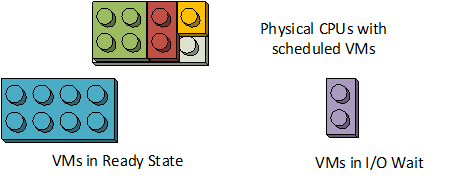
As physical resources become available, they hypervisor will schedule VMs to run on those resources. In some cases, not all physical resources will be in use, due to the number of virtual CPUs required by the VMs in the ready state.
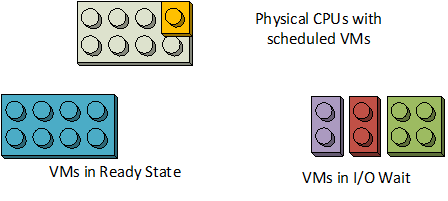
The process continues as VMs either wait for I/O or use their time slice on the physical CPUs.
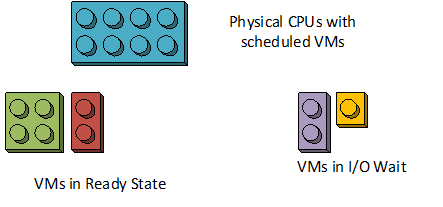
In some cases there are no VMs in the ready state, at which point the scheduled VM will not time out until another VM requires the resources
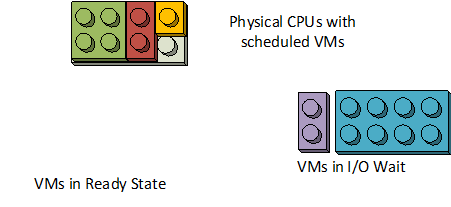
Often a VM with fewer virtual CPUs will be able to be scheduled before one with more virtual CPUs due to resource availability.
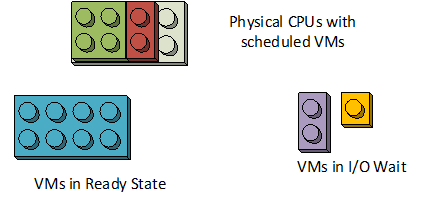
In some cases a VM will complete an I/O operation and immediately be scheduled on available physical resources.
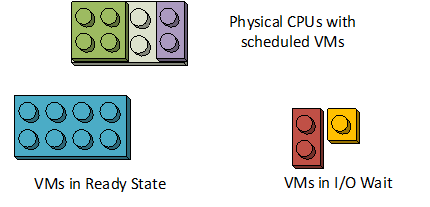
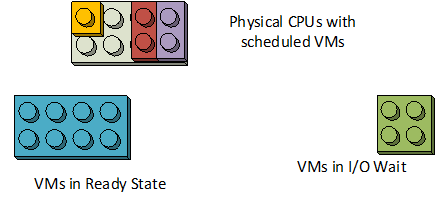
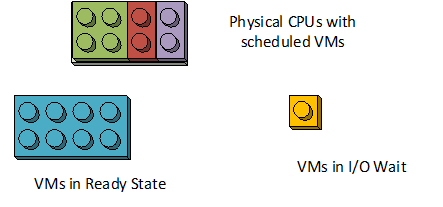
Algorithms are in place to ensure that no VM completely starves for CPU resources but the VMs with more virtual CPUs will be scheduled less frequently and will also impact the amount of time the smaller VMs can utilize the physical resources.
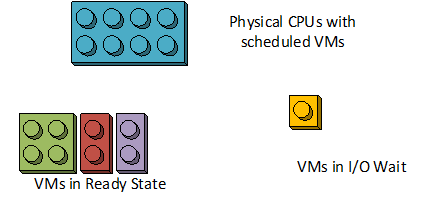
A VM with high CPU utilization and little I/O will move between the ready queue and running on the CPUs more frequently. In this case, the operating system will report high CPU utilization, even though the VM may not be running for a majority of the real time involved.
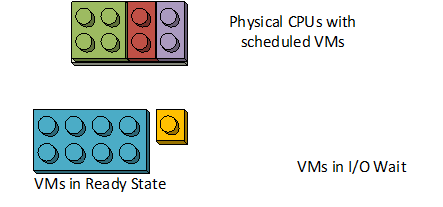
In these situations, operating system tools that run within the VM may indicate that more CPUs are required when, in reality, the opposite is actually the case. A combination of metrics at the hypervisor and at the operating system level is usually required to truly understand the underlying issues.



